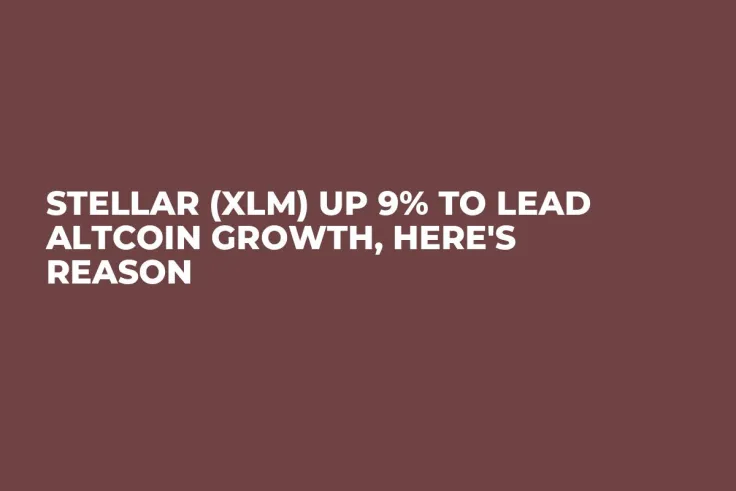
Disclaimer: The opinions expressed by our writers are their own and do not represent the views of U.Today. The financial and market information provided on U.Today is intended for informational purposes only. U.Today is not liable for any financial losses incurred while trading cryptocurrencies. Conduct your own research by contacting financial experts before making any investment decisions. We believe that all content is accurate as of the date of publication, but certain offers mentioned may no longer be available.
As the broader digital currency ecosystem makes an attempt to wriggle out of its bear zone, Stellar (XLM) has grown to become the apparent top performer relative to other altcoins. The cryptocurrency is changing hands at a spot price of $0.1027, up by 9.77% over the past 24 hours. Stellar's bullish momentum has gained steadily over the past week, joining the best performers with week-to-date (WTD) growth of 22.52%.
What's new on Stellar?
The push into a more scalable ecosystem remains one of its core focuses in the short term. As shared on Twitter by one of the protocol's core developers, Timer Weller, developers can now make use of the new overlay protocol that will allow Stellar to scale significantly and enable efficient Soroban smart contract invocations.
If you're building on Stellar check this out. This small change in the overlay protocol will allow Stellar to scale significantly and enable efficient Soroban smart contract invocations. https://t.co/oCVUaMv1qB
— Tomer Weller (@tomerweller) June 27, 2023Crypto Market Prediction: Shiba Inu (SHIB) First Pivotal Critical Price Moment of 2026, Bitcoin's (BTC) Implosion Enables $100,000, Ethereum Handles $3,000 Like It's NothingBitcoin Dominance Logs Rapid Plunge as XRP, SHIB, and Other Altcoins SurgeShiba Inu (SHIB) Burn Rate Explodes 10,728%, Ripple Unlocks 1 Billion XRP, Bitcoin (BTC) Price Breaks Four-Year Market Cycle — Crypto News DigestCoinbase's Armstrong Unveils Top 3 Priorities for 2026
Stellar was developed in 2014 as an efficient peer-to-peer (P2P) decentralized payment network and, thus far, it has become one of the dominant protocols in this niche. Despite its strategic growth and integrations across the board, the need to scale remains one of the dynamic challenges for the protocol, as much as it is for most Layer 1 blockchain networks.
Per the reference update from the Stellar protocol, the scalability push hinges on a proposed change to transaction submission.
Blockchain scalability: Need to get it right
Despite the revolutionary ideology of most blockchain protocols, the push toward scalability remains a crucial bane for most around, including Ethereum (ETH) and Cardano (ADA).
Over the years, both protocols have made significant efforts to enhance scalability on their respective chains and has thus led to the emergence of Layer 2 scaling solutions like Arbitrum, Polygon zkEVM and Optimism, among others.
Cardano is developing the Hydra head, which will work in an offline mode to boost the transactions per second (TPS) such as has never been recorded in the industry. Getting scalability right is a prerequisite for blockchain systems to beat traditional financial service providers in the long term.

 Arman Shirinyan
Arman Shirinyan Alex Dovbnya
Alex Dovbnya Caroline Amosun
Caroline Amosun Denys Serhiichuk
Denys Serhiichuk